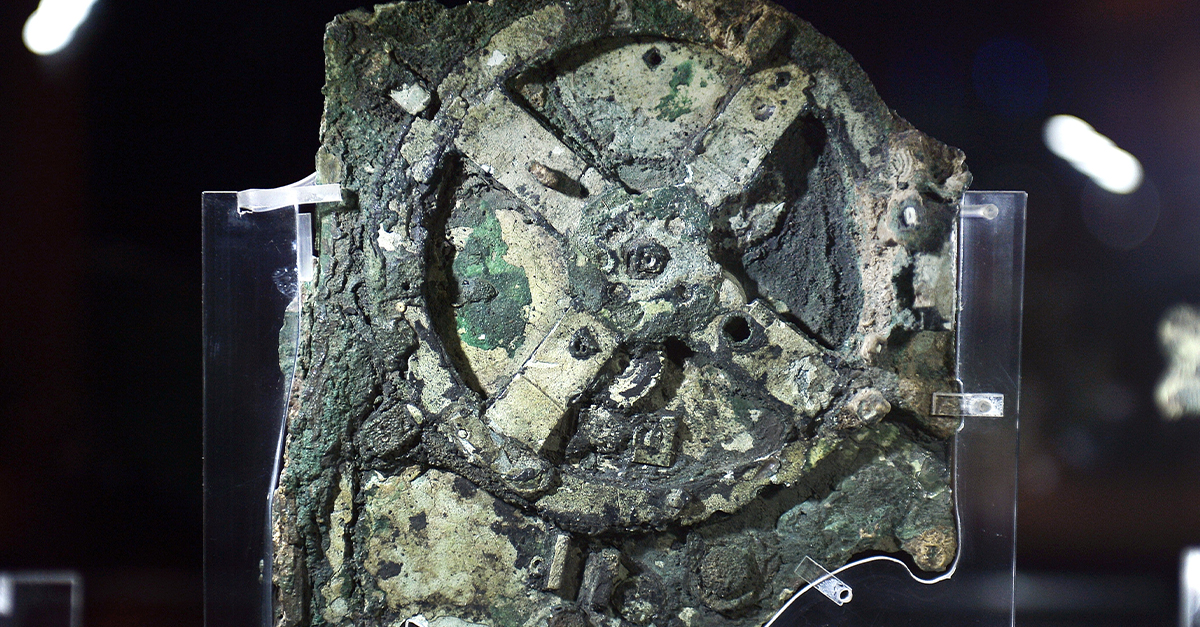The Artifact That Changed History Forever
In 1901, sponge divers discovered a 2,000-year-old computer in a shipwreck—and it continues to baffle historians today. This is the unbelievable story of the Antikythera mechanism.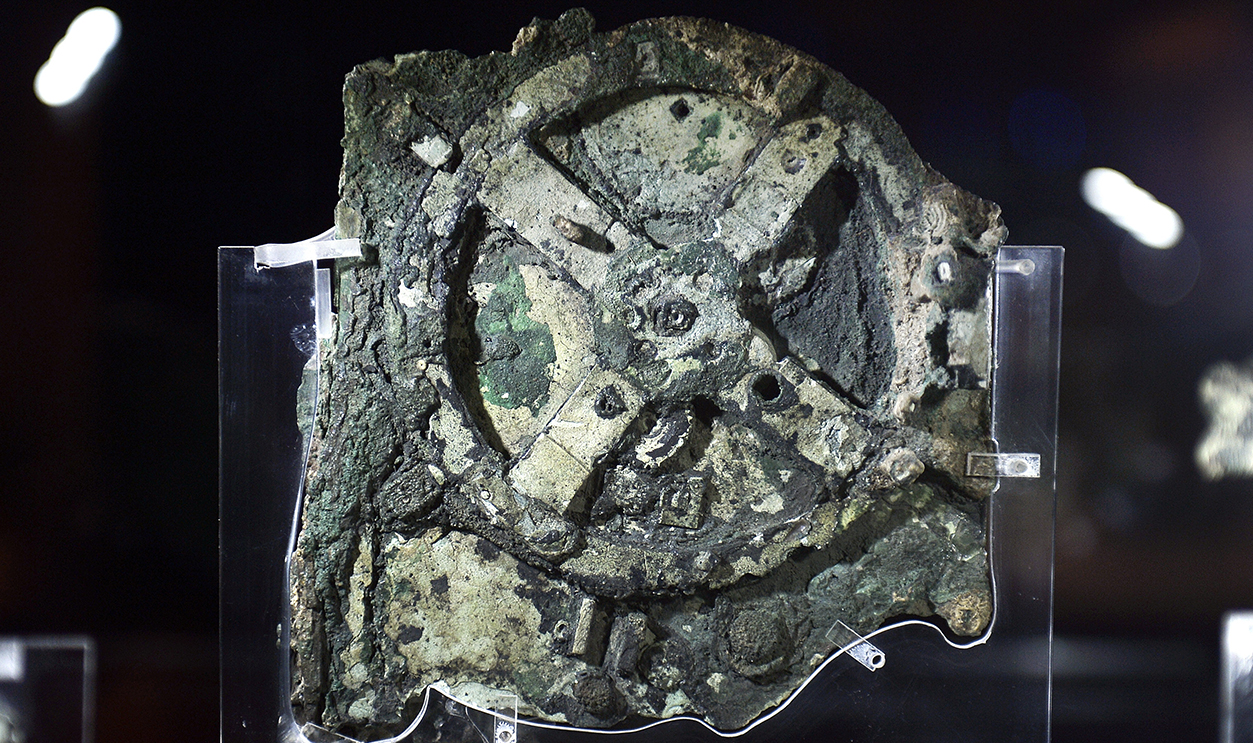
The Incredible Discovery
The story of the Antikythera mechanism begins with its dramatic discovery in 1901. While exploring the coast of the Greek island Antikythera, a group of sponge divers unknowingly stumbled upon one of history’s most important artifacts.
 Grb16, CC BY-SA 3.0, Wikimedia Commons
Grb16, CC BY-SA 3.0, Wikimedia Commons
Found By A Sponge Diver
Elias Stadiatis was one of these sponge divers. Like his comrades, he wore the eye-catching diving suit of the time—made of canvas and topped with a copper helmet.
 BBC, Unlocking the secrets of the world's oldest computer (2022)
BBC, Unlocking the secrets of the world's oldest computer (2022)
He Couldn’t Believe His Eyes
Stadiatis dove 45 meters into the stunning blue waters of the Aegean Sea—but that’s when something alarming happened. Not long after reaching the bottom, he wanted to return to the surface immediately.
 BBC, Unlocking the secrets of the world's oldest computer (2022)
BBC, Unlocking the secrets of the world's oldest computer (2022)
He Was Scared By What He Saw
When Stadiatis surfaced, the words tumbling from his mouth raised all the red flags. He was scared and claimed that he’d seen human remains and the bodies of horses.
 History, Ancient Computer (2003)
History, Ancient Computer (2003)
They Thought He’d Lost His Mind
His fellow divers thought that Stadiatis’s bizarre claims stemmed from confusion. They believed that nitrogen in his air supply had caused him to see things. Therefore, the crew’s captain, Dimitrious Kondos, decided to take a look for himself.
 History, Ancient Computer (2003)
History, Ancient Computer (2003)
They Found A Shipwreck
When Kondos returned from his own dive, he held something shocking: a bronze arm from a statue. There was a shipwreck below. Little did they know, there was something very special on board.
 History, Ancient Computer (2003)
History, Ancient Computer (2003)
They Left It Behind
After the initial discovery, the crew didn’t fully investigate the wreck. Instead, they continued on their journey to complete their sponge-fishing objective. But this wasn’t the end of their story.
 Unknown Author, Wikimedia Commons
Unknown Author, Wikimedia Commons
They Alerted The Authorities
Once the season came to a close, they returned for the artifacts they’d left behind. Captain Kondos ended up notifying the authorities in Athens about the shipwreck. Things were about to get very serious.
 Unknown Author, Wikimedia Commons
Unknown Author, Wikimedia Commons
They Salvaged Everything They Could
In response, the Royal Hellenic Navy and the Greek Education Ministry joined forces with the divers to raise the most unbelievable pieces from their watery graves.
 BBC, Unlocking the secrets of the world's oldest computer (2022)
BBC, Unlocking the secrets of the world's oldest computer (2022)
The Artifacts Were Gorgeous
The salvaging of the Antikythera wreck continued into 1901. The recovered treasures were jaw-dropping. To begin with, there were 36 marble sculptures of Greek mythical figures such as Hercules and Odysseus, as well as three statues of horses. Of course, that wasn’t all.
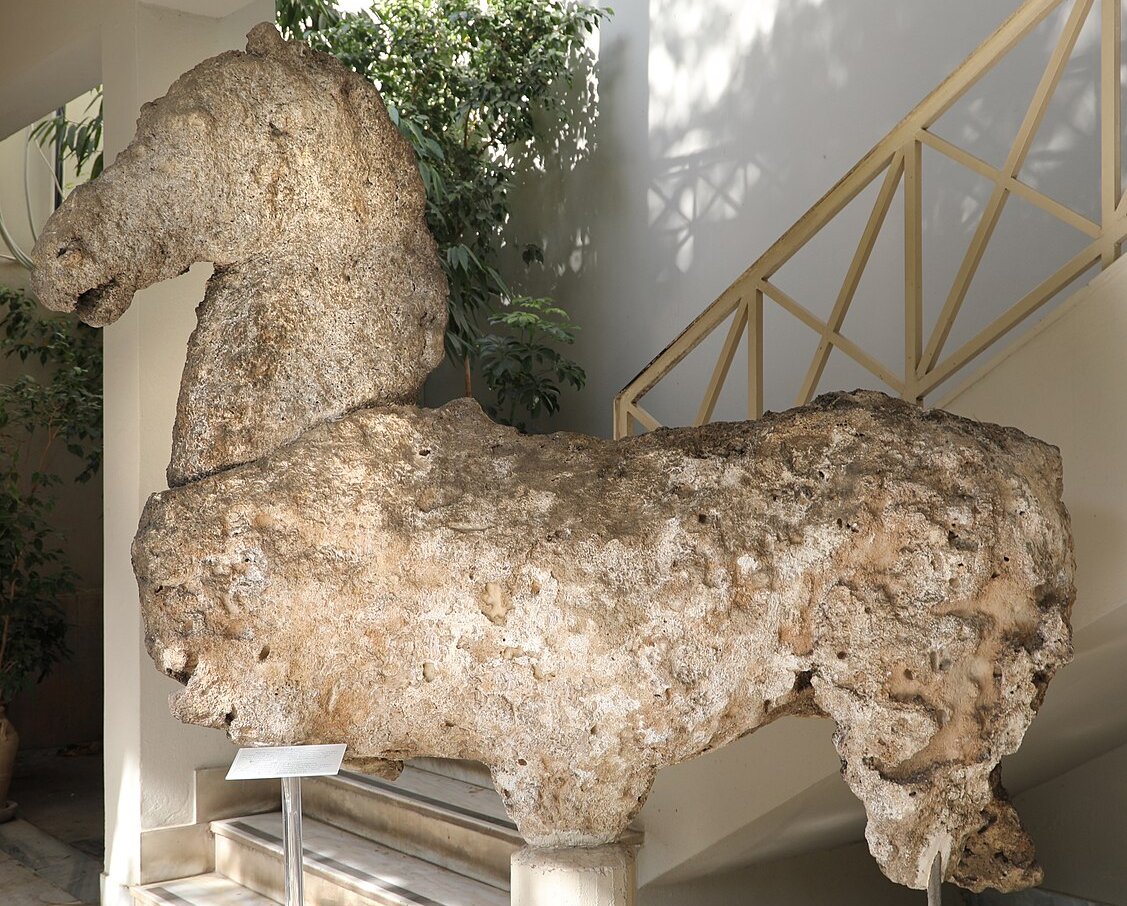 Francesco Bini, CC BY-SA 4.0, Wikimedia Commons
Francesco Bini, CC BY-SA 4.0, Wikimedia Commons
A Tragedy Ended Everything
Divers also found glasswork, equipment from the ship, and bronze statues. However, in the excitement of all these fantastic discoveries, a horrific tragedy brought the operation to a resounding close.
 History, Ancient Computer (2003)
History, Ancient Computer (2003)
A Diver Lost His Life
You see, decompression sickness was a major risk—and sadly, two divers became paralyzed, while one lost his life. However, the efforts of everyone involved shed light on a piece of history that still puzzles researchers today.
 National Geographic, Star Clock (2011)
National Geographic, Star Clock (2011)
They Didn’t Know Its Value
It wouldn’t be until 1902 that archaeologist Valerios Stais properly identified the most famous artifact from the wreck. And perhaps most surprising of all—it didn’t look like much of anything.
 History, Ancient Computer (2003)
History, Ancient Computer (2003)
More Than Meets The Eye
While closely inspecting the findings at the National Archaeological Museum in Athens, he noticed something unbelievable. One particular artifact was a rough-looking piece of bronze.
 Aleksandr Zykov, CC BY-SA 2.0, Wikimedia Commons
Aleksandr Zykov, CC BY-SA 2.0, Wikimedia Commons
It Had Gearwheels
Paying close attention to the details of the object, Stais recognized some exciting features: a gearwheel and Greek inscriptions. This was the Antikythera mechanism.
 Francesco Bini, CC BY-SA 4.0, Wikimedia Commons
Francesco Bini, CC BY-SA 4.0, Wikimedia Commons
It Didn’t Make Any Sense
At first, Stais thought the gearwheels indicated that the artifact was an astronomical clock. But the truth was that the object, especially in comparison to the other objects found in the shipwreck, did not make much sense at all.
 Tilemahos Efthimiadis, CC BY 2.0, Wikimedia Commons
Tilemahos Efthimiadis, CC BY 2.0, Wikimedia Commons
It Didn’t Match The Time Period
Based on what people knew about history in 1902, the gears found in this artifact did not match the time period of the ship it had been found on.
 Zde, CC BY-SA 4.0, Wikimedia Commons
Zde, CC BY-SA 4.0, Wikimedia Commons
It Changed History
By all appearances, it was not an ancient Greek artifact because Ancient Greece didn’t have such technological advances to produce such an object. This is why the discovery of the Antikythera mechanism altered the understanding of human history.
 Zde, CC BY-SA 4.0, Wikimedia Commons
Zde, CC BY-SA 4.0, Wikimedia Commons
The Technology Seemed Out Of Place
The artifact’s unique features seemed to denote an impossible time period—one that came hundreds of years after the shipwreck had taken place. At the time, it certainly begged the question: What was this strange mechanism doing on a ship off the coast of a Greek island?
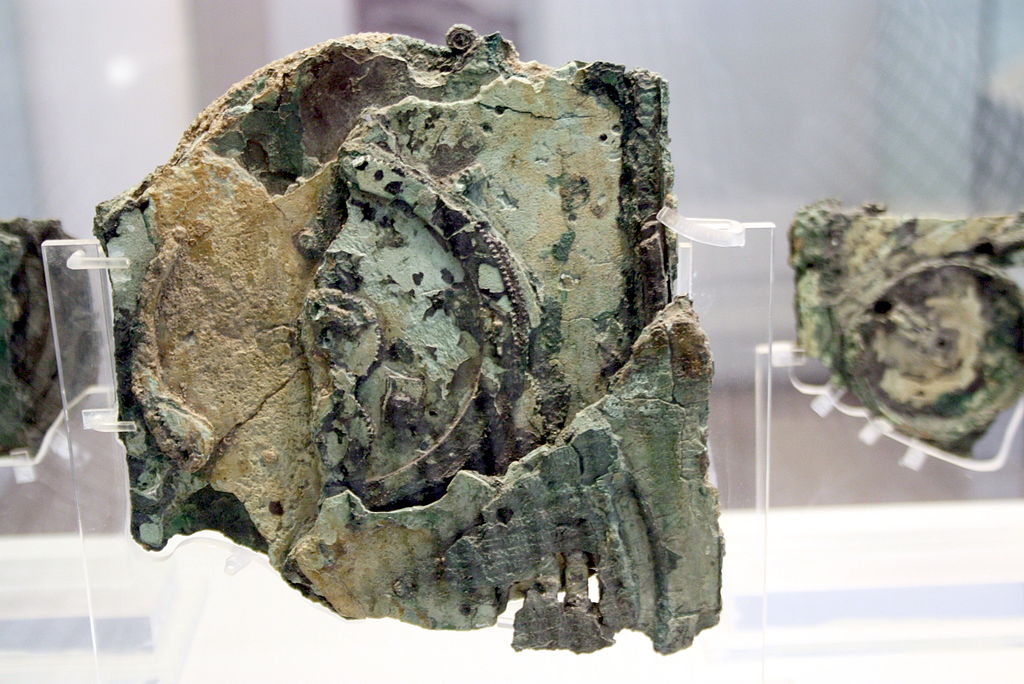 Giovanni Dall'Orto, Wikimedia Commons
Giovanni Dall'Orto, Wikimedia Commons
Possible Origins
Today, it is generally accepted that Hellenistic scientists developed the mechanism, though the exact date of its invention is not fixed. Created before the shipwreck, the theorized periods include 17 BC, 150-100 BC, and even 205 BC.
 Alexandros Michailidis, Shutterstock
Alexandros Michailidis, Shutterstock
A Decades-Long Mystery
For over a century, this historical artifact has been breaking scientists’ brains. Decades of research have led to the intense fragmentation of the mechanism itself.
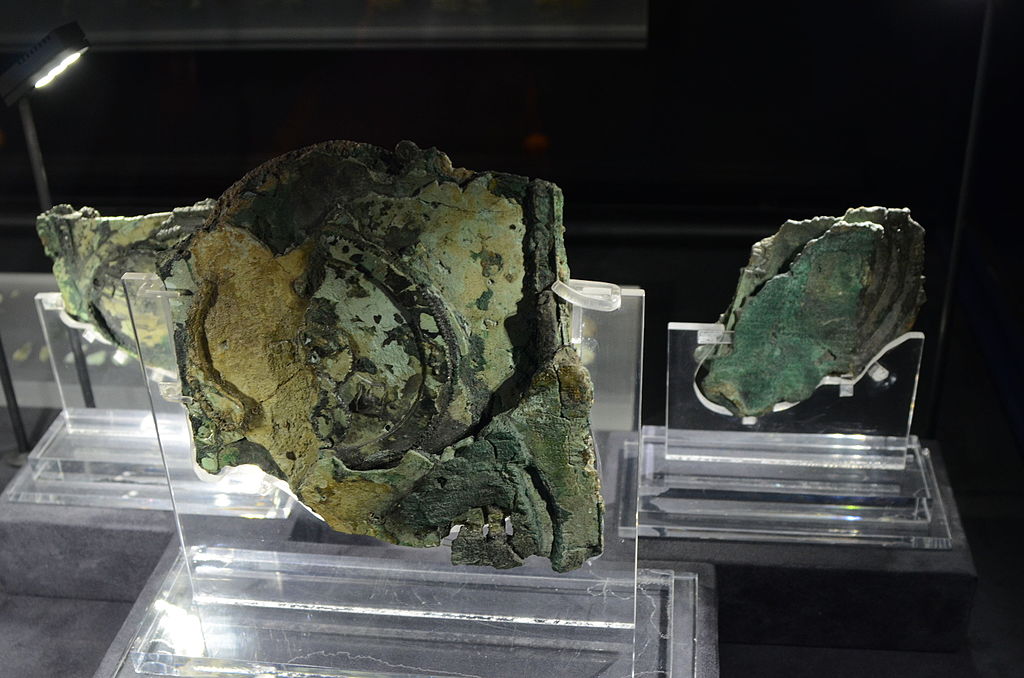 Peulle, CC BY-SA 4.0, Wikimedia Commons
Peulle, CC BY-SA 4.0, Wikimedia Commons
Broken Into Fragments
Over the years, the mechanism has been deconstructed into 82 small pieces to better understand it. It is now a highly detailed puzzle that historians and researchers continue to ponder over.
The Contributions Of Albert Rehm
The first person to suggest what the object might actually be was a German philologist named Albert Rehm.
 Ernst Maria Fischer, Wikimedia Commons
Ernst Maria Fischer, Wikimedia Commons
The Contributions Of Albert Rehm
The Antikythera mechanism became one of the defining highlights of Rehm’s career as he suggested the object was an astronomical calculator. However, to understand what the Antikythera mechanism calculated, we must first understand how the ancient Greeks understood astronomy.
 Francesco Bini, CC BY-SA 4.0, Wikimedia Commons
Francesco Bini, CC BY-SA 4.0, Wikimedia Commons
How The Greeks Understood Astronomy
Back then, the Greeks’ understanding of astronomy came down to what they could observe by looking at the sky.
How The Greeks Understood Astronomy
Throughout the night, they studied the stars. These became known as “fixed stars” because their relative positions stayed constant. However, these ancient astronomers also noticed that certain pieces of the sky did not maintain their relative positions, such as the Moon.
 eberhard grossgasteiger, Pexels
eberhard grossgasteiger, Pexels
How The Greeks Understood Astronomy
Unlike the “fixed stars,” these moving celestial bodies became known as “wanderers”—and they were a major head-scratcher for anyone trying to figure out the heavens.
How The Greeks Understood Astronomy
Greek astronomers couldn’t quite figure out the reason why some of the celestial bodies moved in unpredictable ways. This was because, unlike our modern understanding of the solar system, they believed everything revolved around the Earth rather than the Sun.
How The Greeks Understood Astronomy
It is believed that the Antikythera mechanism’s main function was to figure out the position of the planets depending on their cycles, as well as the movement of the Moon and Sun. Most impressively, the device could make these predictions whether it be a date from the past or future.
 Vislupus, CC BY-SA 4.0, Wikimedia Commons
Vislupus, CC BY-SA 4.0, Wikimedia Commons
Inspired By Previous Astronomical Discoveries
The existence of this device wouldn’t be possible without the knowledge developed by prior thinkers—most notably, Middle Eastern scientists.
 Francesco Bini, CC BY-SA 4.0, Wikimedia Commons
Francesco Bini, CC BY-SA 4.0, Wikimedia Commons
Inspired By Previous Astronomical Discoveries
In Babylon and Uruk (what is known today as Iraq), advancements in astronomy throughout the first millennium BCE laid an essential foundation of knowledge for the Greeks.
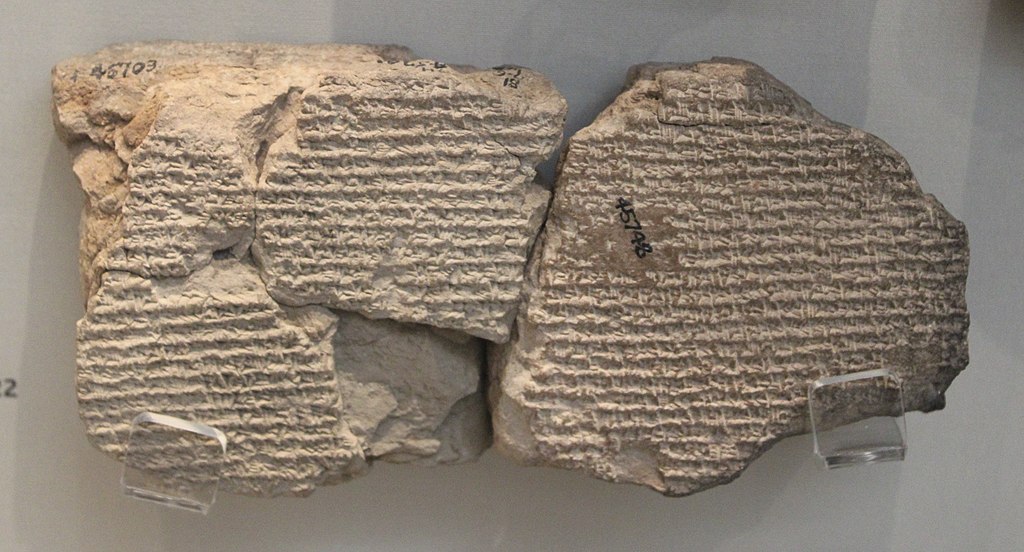 Zunkir, CC BY-SA 4.0, Wikimedia Commons
Zunkir, CC BY-SA 4.0, Wikimedia Commons
Inspired By Previous Astronomical Discoveries
Babylonians had a keen interest in the movement of the Sun, Moon, and planets—and they noted down their positions on clay tablets. Their findings led them to a shocking understanding of these celestial bodies—that they adhered to specific cycles.
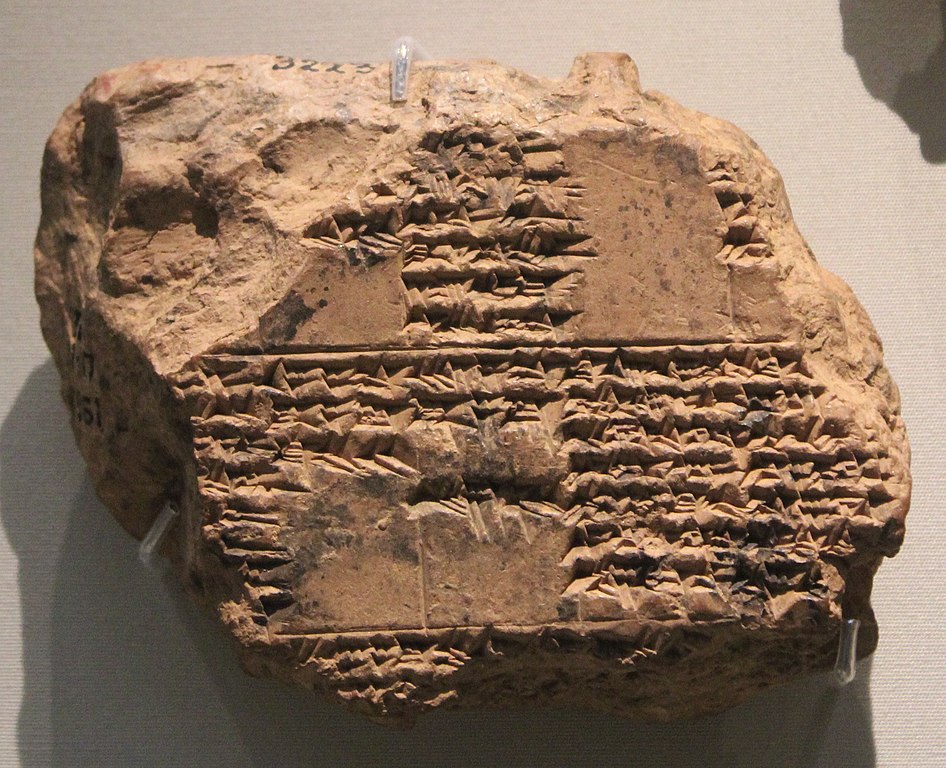 Zunkir, CC BY-SA 4.0, Wikimedia Commons
Zunkir, CC BY-SA 4.0, Wikimedia Commons
Inspired By Previous Astronomical Discoveries
Once they had tracked the cycles of these celestial bodies, they were able to start making predictions. According to a 2014 study, it’s believed that the Antikythera mechanism incorporated many of the findings initially made by Babylonians.
 Zunkir, CC BY-SA 4.0, Wikimedia Commons
Zunkir, CC BY-SA 4.0, Wikimedia Commons
The Fragments’ Secrets
When philologist Albert Rehm got his hands on the mechanism following its discovery, it wasn’t long before he began making jaw-dropping revelations.
 Unknown Author, Wikimedia Commons
Unknown Author, Wikimedia Commons
The Fragments’ Secrets
Rehm’s unpublished notes revealed some of his greatest finds. One of the mechanism’s fragments had a very telling inscription: The number 19. This number correlated to the Moon’s Metonic cycle—19 years. But that wasn’t the only exciting number to reveal itself.
 Juanxi, CC BY-SA 3.0, Wikimedia Commons
Juanxi, CC BY-SA 3.0, Wikimedia Commons
The Fragments’ Secrets
Rehm also discovered other numbers on the same fragment. They pointed to the use of Babylonian predictive astronomy: 76 and 223.
 Juanxi, CC BY-SA 3.0, Wikimedia Commons
Juanxi, CC BY-SA 3.0, Wikimedia Commons
The Fragments’ Secrets
The number 223 pointed to the Saros cycle—the 223-month cycle used to predict the eclipses of the Sun and Moon. However, Albert Rehm wasn’t the only important researcher when it came to the mechanism.
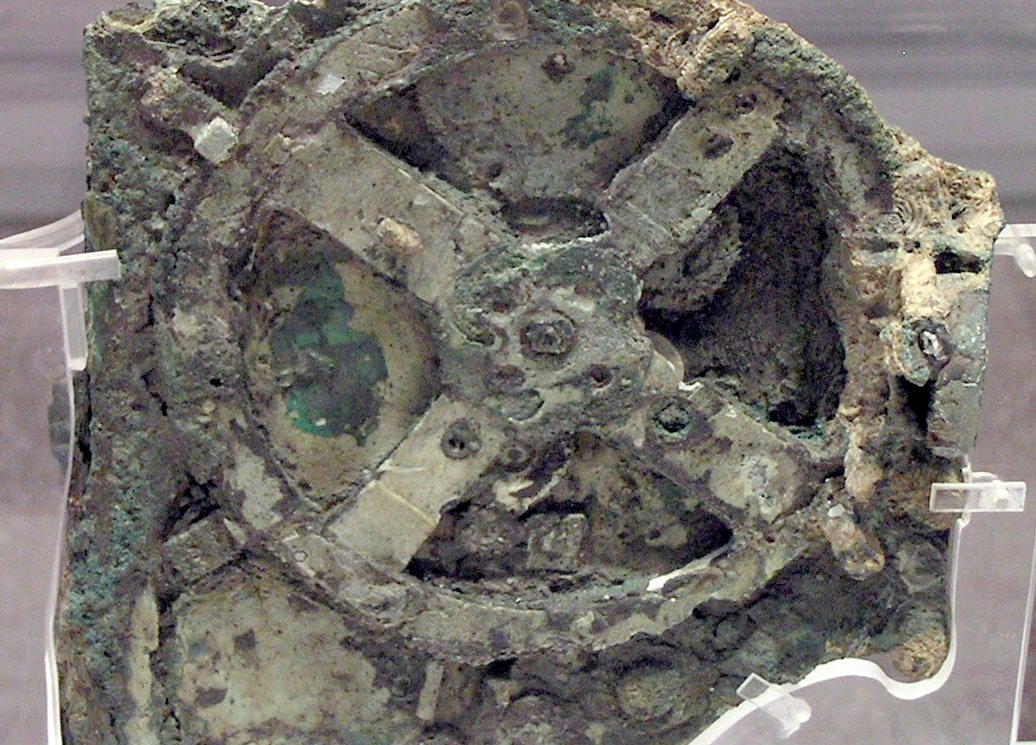 Juanxi, CC BY-SA 3.0, Wikimedia Commons
Juanxi, CC BY-SA 3.0, Wikimedia Commons
The Illuminating Discoveries Continue
For a while, interest in the mechanism seemed to wane, that is, until another great thinker stepped up to the plate. Derek J de Solla Price was a British science historian and professor at Yale University—and his work would yield even more answers.
 Artistsmarket, Wikimedia Commons
Artistsmarket, Wikimedia Commons
The Illuminating Discoveries Continue
Price spent two decades investigating the mystery of the Antikythera mechanism—but in 1971, he decided to look at its 82 fragments in a new and exciting way.
 Giovanni Dall'Orto, Wikimedia Commons
Giovanni Dall'Orto, Wikimedia Commons
The Illuminating Discoveries Continue
Price managed to go beyond the surface of the mechanism, which was all anyone could really look at for the longest time. Alongside the nuclear physicist Charalampos Karakalos, Price used an X-ray to produce images of the 82 fragments. What they uncovered was incredible.
 Unknown Author, Wikimedia Commons
Unknown Author, Wikimedia Commons
Taking A Closer Look
The X-ray images revealed that the mechanism was far more intricate than they’d originally believed. One of the biggest fragments contained a whopping 27 gears. And that wasn’t all.
 Alexandros Michailidis, Shutterstock
Alexandros Michailidis, Shutterstock
Taking A Closer Look
Not only did three smaller fragments each contain a gear, but Karakalos and his wife could finally count the approximate number of teeth in the gearwheels. This brought them a step closer to understanding the machine’s purpose.
Taking A Closer Look
Thanks to these special images of the mechanism, Price managed to shed light on its basic construction: the general positions of the main fragments, the front face's zodiac dials, and the back plate's two major dial systems.
Three years later, in 1974, he finally published his major paper: "Gears from the Greeks".
A Potential Origin Story
In his paper, Price referenced several quotes by Cicero—a philosopher, politician, and lawyer born in 106 BCE. But one quote, in particular, was enough to give anyone goosebumps.
 Glauco92, CC BY-SA 3.0, Wikimedia Commons
Glauco92, CC BY-SA 3.0, Wikimedia Commons
A Potential Origin Story
According to Cicero, the brilliant inventor Archimedes, who came before him, had created a device that sounded shockingly similar to the Antikythera mechanism.
 Domenico Fetti, Wikimedia Commons
Domenico Fetti, Wikimedia Commons
A Potential Origin Story
In describing the workings of Archimedes’ machine, Cicero said, “on which were delineated the motions of the sun and moon and of those five stars which are called wanderers ... (the five planets) ... Archimedes ... had thought out a way to represent accurately by a single device for turning the globe those various and divergent movements with their different rates of speed”.
 Vatican Museums, CC BY-SA 3.0, Wikimedia Commons
Vatican Museums, CC BY-SA 3.0, Wikimedia Commons
A Potential Origin Story
Archimedes' lifespan—around 287–212 BCE—came well before the generally accepted period of the Antikythera mechanism. Therefore, the mechanism may have been inspired by Archimedes’ designs.
 Giuseppe Nogari, Wikimedia Commons
Giuseppe Nogari, Wikimedia Commons
How Does It Work?
So, how did the Antikythera mechanism work in practice? Let’s imagine the device in its glistening bronze prime—”about the size of a shoe box”.
 BBC, Unlocking the secrets of the world's oldest computer (2022)
BBC, Unlocking the secrets of the world's oldest computer (2022)
How Does It Work?
Its front face would have resembled something similar to a modern-day clock. However, instead of showing the hours of the day, its many hands outlined the Solar System.
 History, Ancient Computer (2003)
History, Ancient Computer (2003)
How Does It Work?
To highlight the five planets the Greeks knew about (Mercury, Venus, Mars, Jupiter, and Saturn), there were most likely tiny pieces of rock or glass set into the front panel. There was even a rotating ball to represent the Moon's phases.
 National Geographic, Star Clock (2011)
National Geographic, Star Clock (2011)
How Does It Work?
With its three panels of gearwheels, researchers claim that a wooden box encased the device. On the very front of the box, there was a place to input a date using a calendar dial. Therefore, the first step was to choose a desired date. But that wasn’t all.
 History, Ancient Computer (2003)
History, Ancient Computer (2003)
How Does It Work?
Once you’d chosen your date, all you had to do was spin the crank on the side of the device to calculate the correct locations of the night sky’s celestial bodies. Even more impressive? You could input a future date.
 National Geographic, Star Clock (2011)
National Geographic, Star Clock (2011)
How Does It Work?
Therefore, the Antikythera mechanism was essentially an analog computer—and the oldest one we know of today. Why? Because, quite basically, it processed a variation of data.
And like any good computer, the device also included something very important.
 National Geographic, Star Clock (2011)
National Geographic, Star Clock (2011)
How Does It Work?
More research involving CT scans revealed something else in 2005. The back plate, inscribed with writing, was the mechanism’s very own user’s manual.
Recreating The Mechanism
Though there have been several attempts by researchers to recreate the Antikythera mechanism, none of them have been entirely successful… that is, until 2021.
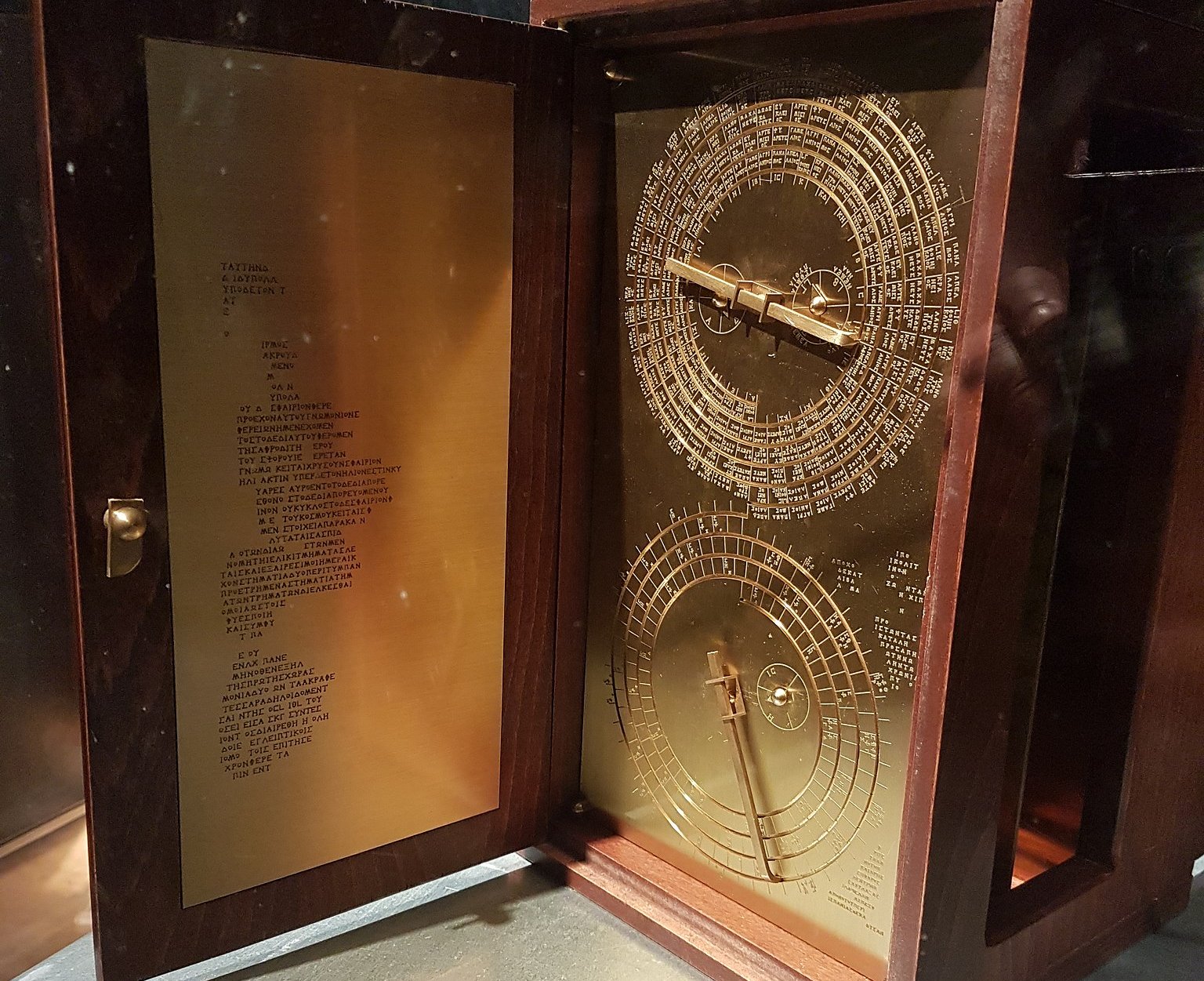 Gts-tg, CC BY-SA 4.0, Wikimedia Commons
Gts-tg, CC BY-SA 4.0, Wikimedia Commons
Recreating The Mechanism
At University College London, the Antikythera Research Team came up with a fresh approach to reconstructing the device. The team had a strong leader—none other than Tony Freeth, the filmmaker and mathematician who had produced the documentary, The World's First Computer, back in 2012.
 BBC, Unlocking the secrets of the world's oldest computer (2022)
BBC, Unlocking the secrets of the world's oldest computer (2022)
Recreating The Mechanism
Freeth and his Antikythera Research team claimed that their model of the device was compatible with the data available to them. Their thrilling findings moved the understanding of this mysterious mechanism another step forward.
 Kgbo, CC BY-SA 4.0, Wikimedia Commons
Kgbo, CC BY-SA 4.0, Wikimedia Commons
Recreating The Mechanism
Writing about his findings, Freeth explains just how fascinating and singular the Antikythera mechanism is: “It single-handedly rewrites our knowledge of the technology of the ancient Greeks”.
 Kgbo, CC BY-SA 4.0 , via Wikimedia Commons
Kgbo, CC BY-SA 4.0 , via Wikimedia Commons
Recreating The Mechanism
You see, based on the general understanding of Ancient Greece’s history, its people were always extremely intelligent and innovative. Ancient Greeks left behind evidence of their brilliance—take the Lighthouse of Alexandria and the Parthenon as shining examples.
They even had advanced plumbing and sewage systems.
 Steve Swayne, CC BY-SA 2.0, Wikimedia Commons
Steve Swayne, CC BY-SA 2.0, Wikimedia Commons
Recreating The Mechanism
However, when it came to their understanding of gears, nobody could have expected they had the technology capable of creating the Antikythera mechanism.
 National Geographic, Star Clock (2011)
National Geographic, Star Clock (2011)
Recreating The Mechanism
As Freeth explains in his article, “But before the discovery of the Antikythera mechanism, ancient Greek gears were thought to be restricted to crude wheels in windmills and water mills…The Antikythera mechanism, with its precision gears bearing teeth about a millimeter long, is completely unlike anything from the ancient world”.
 Kgbo, CC BY-SA 4.0 , via Wikimedia Commons
Kgbo, CC BY-SA 4.0 , via Wikimedia Commons
Embracing The Mystery
The Antikythera mechanism is an excellent reminder of our fallible understanding of the past. We have to embrace the fact that we will never have the entire picture. It’s impossible. And what’s more?
There are likely many things we believe in wholeheartedly at this moment that are completely false.
 Grb16, CC BY-SA 3.0, Wikimedia Commons
Grb16, CC BY-SA 3.0, Wikimedia Commons
Embracing The Mystery
For the longest time, archaeologists and historians thought they’d mapped out a solid picture of Ancient Greece. Then, of course, they found the Antikythera mechanism which threw everything they knew into question. And with one question, came hundreds more.
 Francesco Bini, CC BY-SA 4.0 Wikimedia Commons
Francesco Bini, CC BY-SA 4.0 Wikimedia Commons
Embracing The Mystery
Why haven’t we found any more devices like the Antikythera mechanism? Are there more of them languishing at the bottom of the sea? And what other knowledge about Ancient Greece remains lost to time?
 Juanxi, CC BY-SA 3.0, Wikimedia Commons
Juanxi, CC BY-SA 3.0, Wikimedia Commons
Embracing The Mystery
Operating beneath the shadow of the unknown—and in experiencing the excitement of the artifacts we continue to uncover—there lies a world of possibility. After all, if the ancient Greeks managed to create something as complex as an analog computer, history likely has many more surprises in store for us.

